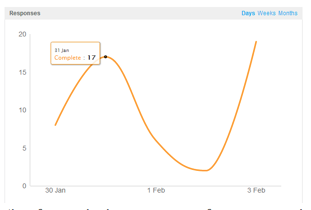Spying inefficiencies – in markets, business models, business processes such as supply chains and more has been one of the key methods companies gain competitive advantage.
Spying inefficiencies – in markets, business models, business processes such as supply chains and more has been one of the key methods companies gain competitive advantage.
Take for example an ecosystem as staid as Major League Baseball (MLB) which counts the year 1869 as its inception. Michael Lewis’ Moneyball tome showcases how Oakland A’s general manager Billy Beane revolutionized how baseball talent is scouted, sourced and even utilized on the field. Beane knew that in Oakland that he’d never have the payroll to compete with big market teams such as the Boston Red Sox or New York Yankees. So Beane had to find a new method of competing.
By now, those who have read Moneyball or at least seen the Hollywood movie know Beane chose to compete on analytics. He summoned help from statisticians and computer programmers to define new metrics, and resource talent that he felt was either undervalued or overlooked. And for three to four years, the Oakland A’s competed for American League pennants with scrappy efficiency—and usually with half the payroll of large competitors.
Competitive advantage, however, doesn’t usually last long. Indeed, other MLB teams learned of Beane’s methods (and devoured any Bill James publication they could find) to neutralize Beane’s gains in the marketplace. Equilibrium, or parity, was once again reached.
That is, until Moneyball concepts of “competing on analytics” took the next leap from helping analyze and assemble teams to improving performance of individual players.
In MLB it’s common for players to not meet their so-called potential. For example, Billy Beane himself was a fine baseball player with all the requisite skills necessary to achieve stardom. However, Beane never quite lived up to expectations of teams that purchased his skills—he left MLB with a .219 career hitting average and only three home runs. Exhibit B is current Oakland A’s pitcher Brandon McCarthy, who despite much promise, struggled for years with his command and control—relying on only two good pitches to get hitters out.
That is until McCarthy got the Moneyball religion. An ESPN Magazine article titled “SaviorMetrics” chronicles McCarthy’s struggles on the mound until 2009 when he adopted Moneyball principles. Scouring websites devoted to advanced MLB statistics, McCarthy discovered he was one of the worst pitchers in getting hitters to bat ground balls. That’s especially significant when one realizes, according to the ESPN article that, “the average flyball is three times more dangerous than the average ground ball” in producing runs.
McCarthy decided to retool his approach and adopt two new pitches that were sure to induce ground balls. It wasn’t magic at first, but over a few years of trial and error, McCarthy found his groundball to flyball (GB/FB) ratio doubled—which of course meant fewer of his pitches would end up in the outfield bleachers.
Of course, there were mechanical issues to iron out along the way, plus McCarthy had to adopt two new pitches (which certainly wasn’t easy). But so far, his strategy of inducing more ground balls seems to be working–he just signed a one year contract with the Oakland A’s for more than $4 million.
Inefficiencies are everywhere and they can be exploited for competitive gain. Sometimes those inefficiencies are in markets (exploited through trading arbitrage strategies), in supply chains, in ecosystems (i.e. Major League Baseball), or even for individual performances (i.e. Brandon McCarthy).
The trick is to first detect those inefficiencies with data analysis, create a plan to attack/exploit them for gain, and to execute on that plan. And of course, it’s important to evolve and always seek new avenues of improvement.
In Brandon McCarthy’s case, it’s only a matter of time before hitters adapt to his strategies and learn his new pitches. Here’s hoping he has another analytics discovery up his sleeve.








